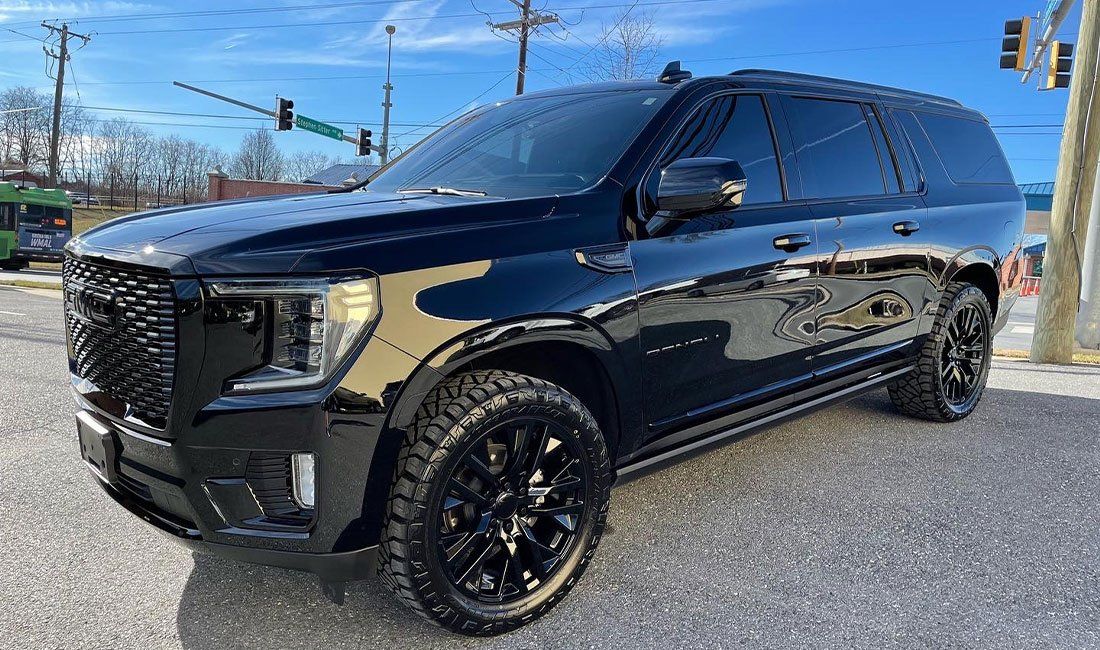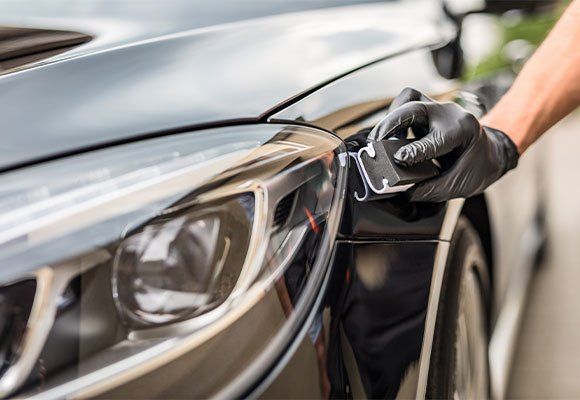If you're an automobile enthusiast, you know there's no better way to keep your car looking like new than through ceramic coating maintenance. But between the vast range of products available and the hard-to-understand instructions, it can be tough to know where to start.
Luckily, we've done the research for you—today, we'll explore the ins and outs of ceramic coating maintenance. From choosing the right maintenance products to the simplest ways to apply them, we’ll reveal everything you need to know to maintain your car’s luster and extend its lifespan. Let’s start by talking about why ceramic coating is the best option for protecting your car.

Preparing Your Car for Ceramic Coating Maintenance
When it comes to ceramic coating maintenance, proper preparation of your vehicle is a crucial factor that can make or break the process. Taking the time to thoroughly prepare the surface for ceramic coating application is key to a successful end result and maintaining long-lasting protection from the elements.
Firstly, it’s important to ensure that your car has been washed and cleaned thoroughly prior to applying the ceramic coating. Any dirt, dust, grime, grease, or wax still remaining on the car’s surface after washing could prevent an effective bond between the coating and paintwork. With this step alone, you can help extend the lifespan of your car's coating considerably. Oftentimes, people prefer to get their cars detailed with a clay bar treatment or polish before applying a ceramic coating, just to be sure all contaminants are removed properly.
On the other hand, some may argue that omitting this step won't affect the success of a ceramic coating application in any way, and they could be right. It will ultimately depend on how much attention has been paid to washing and cleaning the vehicle before updating it with a layer of protection. Whether you decide to clay bar or simply give your car an extra deep wash, when aiming for a professional job, it's best practice to err on the side of caution and take these extra steps during preparation.
With careful preparation successfully completed, you’ll be ready to move forward with installing a long-lasting protective barrier against damage caused by environmental factors such as harmful UV rays or bird droppings. Our next segment will focus on how to effectively clean your car's paintwork before applying a ceramic coat.
Cleaning Your Car Before Applying a Ceramic Coating
Cleaning your car before applying a ceramic coating is an essential step in ensuring long-term protection. Contaminants such as dust, dirt, or other particles trapped in the paintwork would be sealed underneath the coating if not properly cleaned beforehand. This could cause deterioration of the coating’s integrity and eventually its durability.
For cars with a more extensive build-up of dirt, it is recommended to apply a pre-wash cleaning system that uses an optimal combination of organic solvents and surfactants for deep cleaning the car’s surface. If there is heavier contamination like brake dust or tar, use a clay bar to remove them from the surface before applying the ceramic coating. Clay bars are effective ways to remove embedded contaminants that washing alone isn't enough to take away them completely. Furthermore, if you have used polish or wax on your vehicle prior to using a ceramic coating, they should also be thoroughly removed using either a gloss enhancer or sealant remover since leaving existing polishes underneath could affect the bonding ability between the car body and the ceramic coating itself.
It's also worth noting that some people prefer to set up their own car-washing station, which can ensure all materials used during the cleaning are kept clean to avoid recoloring the surface while scrubbing off unwanted grime. This method can guarantee that no parts will be missed during the process, thus creating a smooth finish perfect for applying a ceramic coating afterward.
Whatever approach was chosen for cleaning your car before applying ceramic coatings, having it inspected for any remaining flaws after completing all steps is advised. Doing so will reduce any potential risk caused by external factors such as humidity or temperature in preventing hazardous materials from accumulating on a vehicle after their application. With proper attention paid to preparation and maintenance, ceramic coatings can remain effective throughout their expected lifespan, keeping your car not only looking sharp but also well-protected against environmental damage.
Now, with all those preparation steps out of the way, it’s time to focus on getting rid of liquids and compounds left over from cleaning and maintenance work—another vital step in making sure your automotive ceramic coatings last far beyond what was initially predicted.
The Importance of Rinsing and Drying Fluids and Rubbing Compounds Away from the Surface
Once you have finished cleaning your car, it is essential to rinse away any residual rubbing compounds and/or fluids. Leaving these residues on the surface before pre-coating can have disastrous results, such as blotchy stains or chemical reactions with the ceramic coating that lead to a weakened surface over time. This is because some of these compounds contain chemicals that can interact with surface protection and lead to a loss of protection in certain areas. This is particularly important if you have used a polishing compound, which is not designed for use with coatings and should be rinsed away immediately after use.
Rinsing alone, however, may not be enough to ensure all of the residues are removed. Many people recommend thorough drying after each rinse to remove additional stubborn contaminants. This is especially true for soft cloths or towels that may have oils or debris left behind during the cleaning process. Additionally, it’s not unheard of for overspray from other vehicles on highways or during auto shows to occur as well; while this may seem minimal at first, it could eventually cause problems with the coating’s protective capabilities.
Taking the necessary steps before applying a ceramic coating—cleaning, rinsing, and drying—will help ensure its longevity and stave off potential problems with hazardous compounds and residues. It goes without saying that choosing the appropriate cleaning agents for the surface is integral to this process as well; we will delve more into this intricate topic in our next section.
Choosing Appropriate Cleaning Agents for Your Car’s Surfaces
When it comes to cleaning agents, there are a few important considerations. The safest choice is a mild detergent or shampoo specifically made for automotive surfaces and ceramic coatings. These detergents are designed to be gentle on the coating and provide effective cleaning without damaging the surface.
In some cases, consumers may opt for more powerful cleansers to tackle especially stubborn stains and dirt buildups; however, one must exercise extreme caution. Harsher chemical cleaners should generally be avoided, as they can strip away the protective layer of the ceramic coating, destroying its effectiveness. When using these harsh cleaners, test them on an inconspicuous area first before using them extensively.
Ultimately, these decisions should be based on careful consideration of your own needs and comfort level. For example, if you live in a particularly dusty environment, opting for a heavy-duty cleaner may make sense despite the risk of damaging the ceramic coating. However, no matter what kind of cleaner you use, it is always important to closely follow each product's instructions, read safety warnings, and wear protective gloves whenever necessary when handling any chemical agents.
Taking the time to properly rinse and dry fluids and grime-forming compounds away from the surface, as outlined in the previous section will ultimately reduce the amount of heavy-duty cleaning that is necessary. This not only helps extend the life of your ceramic coating but also helps maintain its protective properties over time. That being said, it is important to ensure that you are choosing appropriate cleaning agents for your car’s surfaces depending on your specific situation and needs.
Now that we have discussed maintenance tips for keeping the surface of your vehicle clean with appropriate cleaning agents, let’s turn our attention to maintaining your ceramic coating with other waxes and spray waxes. What types of products should you use, and how often should you apply them?
Applying Waxes and Spray Waxes to Maintain Your Ceramic Coating
The process of applying waxes and spray waxes to maintain the ceramic coating on a car's surface comes with its own set of considerations. On one hand, they are beneficial for protecting the surface from dirt and debris while providing shine and preserving the ceramic coatings on the surface. Many users find that applying high-quality wax before a ceramic coating helps keep the coating adhered to the car's surface better, leading to superior protection in the long run.
On the other hand, additional steps in the application may be necessary if too much wax is applied. Too much wax can leave residue on the car and cause staining and discoloration of the paint, depending on the quality and composition of the product used. Additionally, some higher-end products should be applied by professionals due to their ineffectiveness caused by inexperience.
To make sure your car gets proper maintenance from waxing and/or spray waxing, it is important to always use superior products like Meguiar's or Mother's that are specifically designed for cars with ceramic coatings. Furthermore, following the manufacturer's instructions for usage will ensure you get optimal results. For those who are inexperienced or would rather have their cars professionally taken care of, there are several detailing companies that specialize in cleaning and keeping ceramic-coated cars properly maintained.
While selecting products and ensuring you don’t use too much product are essential factors when it comes to setting up an effective maintenance routine with waxes or spray waxes for your car’s ceramic-coated surfaces, taking additional measures such as opting for professional services or following manufacturer instructions is equally important. Ultimately, all of these tips will help ensure your car stays clean and protected for an extended period of time.
Whether you choose to take care of your car yourself or send it off to a professional, following this maintenance regimen could lead to the long-lasting durability and protection offered by ceramic coatings.
- According to a 2017 study, ceramic coatings have been shown to be abrasion-resistant, provide protection against harsh environmental conditions, and reduce water spotting.
- A 2019 report found that ceramic protective coatings can make automotive surfaces much easier to clean and maintain than traditional waxes and sealants.
- A 2018 research review concluded that ceramic coatings can significantly improve paint protection against UV damage, oxidation, and airborne contaminants.
Tips for Maintaining Long-Lasting Durability and Protection with Ceramic Coatings
When it comes to maintaining the long-lasting durability and protection of ceramic coatings, there is no one-size-fits-all approach. Some may argue that applying waxes and spray waxes is enough to maintain a ceramic coating, while others may claim that a regularly scheduled washing routine with specific cleaners and/or polishes can further enhance the performance of a ceramic coating.
On the one hand, those in favor of using waxes note that these products help prevent dirt buildup, making it easier to clean off any contaminants. Additionally, when used frequently, waxes can extend the life of the ceramic coating and act as an additional barrier against the elements. On the other hand, proponents of using cleaning products find this method more effective for removing dirt, dust, bird droppings, and pollen that can embed themselves into a ceramic coating. Washing with shampoo rather than wax also helps reduce swirls and scratches, which can lead to fading or dullness in the paint finish.
Ultimately, both approaches have their merits and have proven successful in keeping a car’s paint job looking new for longer. Research has found that regular washing combined with regular waxing offers the most comprehensive maintenance profile for maximizing ceramic coating longevity. As such, it may be worth using an every-other-week approach where one week you use a wash and polish, and on alternate weeks you use a wax; this will help ensure your ceramic coating is protected for years on end without sacrificing performance or aesthetics.
Looking to keep your ceramic-coated vehicle sleek and shiny? Trust the experts at Maryland Auto Spa! Our team of skilled technicians can provide you with professional ceramic coating maintenance to ensure your vehicle's long-lasting protection. Give us a call at (301) 704-6503 to schedule an appointment or learn more about our services. Don't let your investment go to waste; take care of your ceramic coating with Maryland Auto Spa today!







